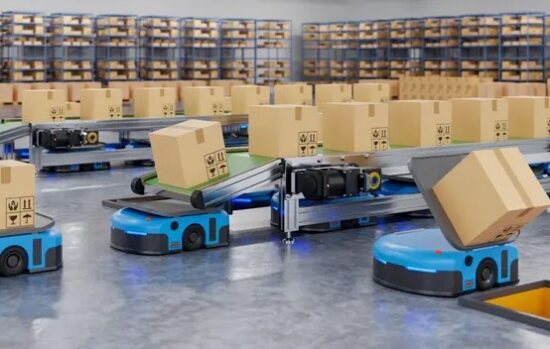Katie Brenneman is a frequent contributor of content here at 21st Century Tech Blog. Her interests include writing about sustainability, lifestyle, and mental health. You can follow her on Twitter.
In this contribution, Katie talks about how robotics is changing the composition of what we call the labour force. The modern industrial production line today has seen assembly line workers and those working in warehousing replaced by machines. Is this the beginning of the end for human labour? Read more to find out what’s changing.
The idea that robots are taking our jobs isn’t too far off base. According to an October 2021 article appearing in The Guardian, automation is already in use throughout a variety of industries, from fast food to agriculture. Robots are helping bridge the gaps in what is seen as an acute global labour shortage fed by the COVID-19 pandemic, an inflationary spiral caused by disruptions to supply chains, and since February of this year, the war in Ukraine.
Is that the entire story? No. The human job story has gotten more complicated as unemployment rates drop while at the same time there is a widening job skills gap. Not every job vacancy today can be fulfilled by a machine. But a large number of available jobs can be, and that’s a challenge for humanity going forward unless we have a plan for a large percentage in our future to not spend their time working.
Experts believe the workforce of the near future needs soft and IT skills. Getting there starts with basic data literacy so that a larger pool of potential applicants have a strong technology foundation upon which to build a career.
Why Tech Can’t Replace Humans
Technological advancements in business operations impacting the global workforce are nothing new. Innovation has been going on since the water wheel, and later the steam engine reduced the need for animal and human labour input. Innovations like robots and other industrial machines have made our modern society. Without them, things would look a lot different.
But since the COVID-19 pandemic, automation has gained in popularity. Businesses are investing in it at a record pace. It solves labour shortages and offers long-term financial benefits. Even fast-food chains like McDonald’s are replacing human cashiers with self-serve digital kiosks. They are doing this in response to public health concerns but in the end, it will mean fewer jobs for humans.
Yet for all the purported benefits automation supposedly brings, it has its limits. Even the most advanced robots cannot be programmed to perform tasks and functions that require dexterity or quick reflexes that are both mental and physical. And machines do break down which means employment for humans with specialized training to keep them up and running.
Education and Training to Bridge Skilled Labor Gaps
Unfortunately, the bulk of today’s workforce lacks the knowledge and skill set required to operate in this new industrial revolution where automation technologies are working side-by-side with humans or working on their own with little human interaction.
For the labour workforce in the face of robotic competition, lifelong learning is the desired skill set. Employers want people who can adapt and learn. They want them to come to the job with backgrounds in data analytics, safety enforcement, quality control, and information technology (IT) today. Who knows what will be the skillsets needed in the next five, ten, or twenty years? The result is employers investing in continuous training for the right candidates, and supporting them as employees through ongoing educational programs.
The human resources departments in companies are upgrading skills as well because the investment employers need to make for the right job candidates is increasing in cost. The wrong hire can cost a company time, money, and competitive positioning within its market segment.
Increasing Diversity in the U.S. Labour Pool
There is a diversity gap in the current United States labour pool and it is in stark evidence in the technology sector. Within the IT segment, only 15% of workers define themselves as non-white. This compares to the overall composition of the national labour force where visible minorities make up about 34%. Regarding female employment, in IT the numbers are marginally better. Of the almost 330,000 software engineers employed in the U.S., 25.1% are women.
Today employers are vetting candidates from vastly different backgrounds and education levels because they are making investments in training new hires. Whether this means importing labour from overseas or recruiting people with a criminal past, businesses are thinking outside the box when it comes to hiring and training. The result may lead to greater employee retention and a happier workforce with skill sets that match the increasing pace of innovation and change that characterizes the 21st century.









